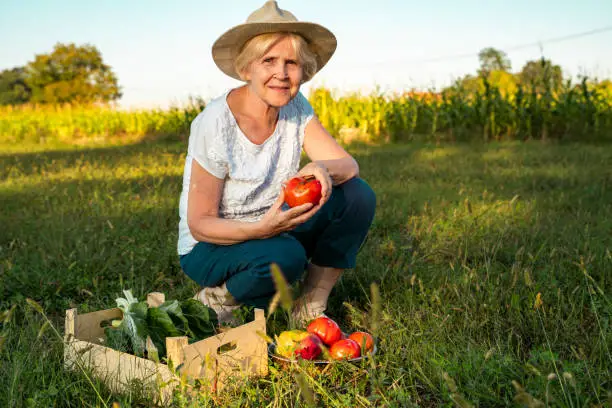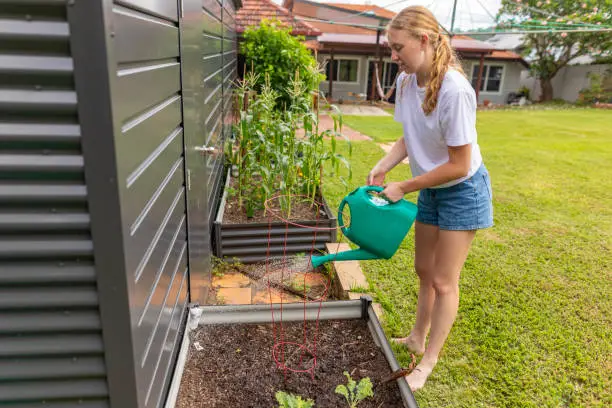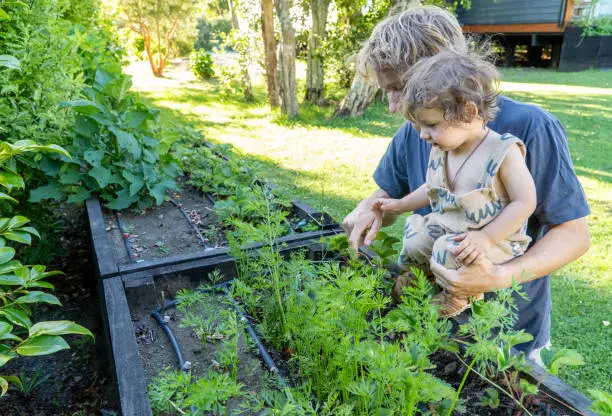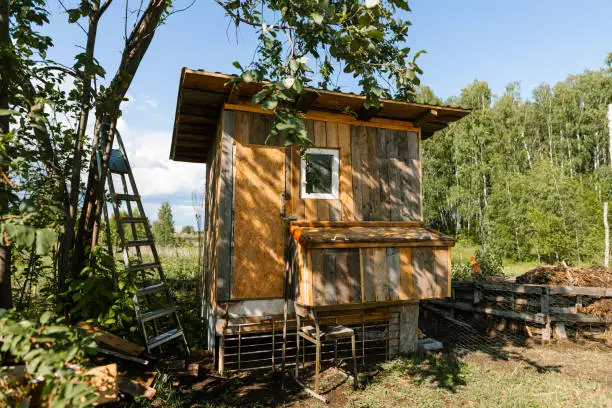You have a green thumb and want a backyard homesteading orchard. Fantastic! Before digging holes and planting saplings, discuss choosing fruit trees for your environment. This goes beyond planting seeds and hoping for the best. No, my friend, it’s more complicated.
Understand your climate first. Knowing your temperate or tropical climate can make all the difference. Imagine growing bananas in Alaska—it’s like teaching a cat to fetch—it doesn’t work.
Your Hardiness Zone
First, determine your USDA hardiness zone. This helpful tool splits North America into 13 zones by the average annual lowest winter temperatures, like a cheat sheet for yard-friendly flora.
Apple trees are suitable in Zone 5 since they can tolerate colder winters. Oranges and lemons thrive in Zone 10’s warmth.
Chill Hours Matter
Have you ever heard of chill hours? These help fruit trees that need a certain level of cold to break dormancy and produce fruit. Consider it their beauty sleep.
Peach plants need 500–1,000 cold hours, depending on the variety. If your winters are mild, low-chill versions may be preferable.

Soil Concerns
Let’s dig—literally! Your soil type affects which fruit trees thrive. Standing water can promote root rot faster than you can say “Jack Robinson.” So well-draining soil is best.
Also, consider evaluating soil pH. Most fruit trees like pH 6-7 soil. If your soil is overly alkaline or acidic, add lime or sulfur.
Solar exposure
Fruit trees enjoy the sun and require lots of it to photosynthesize and produce luscious fruits. Try to get six hours of direct sunlight daily. Try miniature types or shade-tolerant species like pawpaw in your yard’s shaded areas.
Water Needs
Some fruit trees, like the fig tree, are drought-tolerant, but young seedlings need constant irrigation until their roots burrow deep.
A good rule of thumb? Water profoundly but rarely. Long sips rather than fast gulps let roots develop deeper and away from the surface.
Pollinator Partners
Newbies often need to pay more attention to pollination requirements. Fruit trees can self-pollinate or need surrounding plants to pollinate.
A fruit set is usually best for apples if another apple type is within 50 feet of bees. Plan unless you want a Lonely Hearts Club apple orchard!
Illness Resistance
Heartbreakingly, nobody wants ill plants with shriveled leaves and rotten fruits in their gardens! Choose cultivars with disease resistance tailored to your region’s problems.
If you reside in a fire-blight-prone area, choose resistant cultivars like ‘Liberty’ or ‘Seckel.’
Local Advice Is Gold
Never disregard local knowledge! Talking to gardeners or visiting local nurseries can provide microclimate-specific information that no book or blog post could ever deliver!
Plus, they may give you cuttings or seedlings—a bonus!

Waiting Pays Off
Finally—and this may hurt—growing fruit plants from scratch requires patience! It may take years before they produce enough goodness to brag about at family gatherings, but harvest season is worth it!
Grandma always said, “Good things come slow”—she wasn’t kidding about her prize-winning plums!
That’s it—a quick guide to choosing fruit-bearing friends that suit your environment without seeming like an overzealous bot spewing horticultural jargon, did we?
Backyard Bounty: Pruning and Training Fruit Trees for Maximum Yield
Have you ever imagined your backyard as a lush orchard full of luscious fruits? You’re not alone. Pruning and training fruit trees can make that goal come true. Though not rocket science, it requires some knowledge. Let’s get technical.
Let’s start with why trimming matters. As a wild teenager, your tree needs guidance yet has potential. Fruit trees can become overgrown and knotted without pruning, reducing productivity. Cut superfluous branches to focus the tree’s efforts on producing tasty fruit.
When should you prune? Timing is crucial. Most fruit trees thrive in late winter or early spring. Cuts are less likely to harm dormant trees, and seeing what you’re doing is more accessible without leaves.
Bring some sharp pruners and loppers. Dull tools hurt trees more. Dead or diseased branches are energy hogs, so remove them.
Next are water sprouts, those robust vertical shoots that appear unexpectedly like party guests. They rob nutrients from productive branches and yield little fruit. Off with their heads!
When shaping your tree, consider ventilation and sunshine. Good pruning makes a tree look like an open vase or goblet—wide at the top and open in the middle for light.
I’ll now discuss training young trees, a critical step that beginners often ignore. Training is teaching your tree healthy behaviors early on. If left alone, a young tree may grow in strange directions.
If young saplings are shaky, stake them to help them grow straight and robust until their roots take root.
Training trees along fences or walls is an art form for espalier enthusiasts! Espalier uses wires or trellises to guide branches along predefined routes, perfect for tiny spaces and adding aesthetics.
The horizontal cordon system trains major branches horizontally along support wires set vertically apart on a wall or fence behind them, creating a beautiful visual effect and maximizing light exposure!
Don’t expect rapid results; wait a few seasons before judging the outcome. Patience is key.
Remember summer pruning! Summer trims optimize growth patterns and control size, while winter cuts prioritize structure and health maintenance.
The suitable fruit trees for your climate ensure a thriving backyard orchard. Start by finding your USDA hardiness zone to match trees to your environment. Oranges thrive in Zone 10’s warmth, whereas apple trees like Zone 5’s cold. Understand chill hours—trees require cold to break dormancy. Peaches take 500-1,000 hours, with milder winter cultivars requiring less.
Soil quality matters. Well-draining soil prevents root rot, and most fruit trees have a pH of 6-7. Use lime or sulfur to adjust soil pH. Most trees require six hours of direct sunlight every day. For darkened regions, use small or shade-tolerant plants like pawpaw.
Watering strategies matter. Mature trees thrive on deep, infrequent irrigation, whereas young ones need constant hydration—plant appropriate apple cultivars nearby for pollination. Select disease-resistant cultivars for local pests and circumstances.
Experienced gardeners and nurseries can provide microclimate insights. Fruit trees may take years to produce fruit, but the wait is worth it.
Pruning and training fruit trees boost yield. Use sharp tools to prune dead or diseased branches in late winter or early spring. Remove water sprouts and shape the tree for sunshine and airflow. Training and staking young trees promotes health. Branch espaliering along fences or walls benefits small spaces.
Pruning and training require patience. Your backyard orchard will thrive with the appropriate care, yielding abundant fruit.





Leave a Reply
You must be logged in to post a comment.